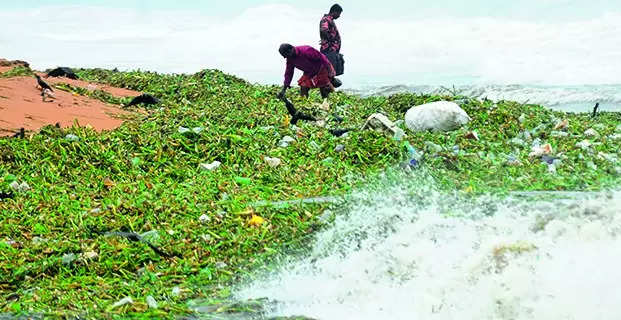Thiruvananthapuram: An ongoing study by the department of aquatic biology and fisheries of Kerala University has found that pollution in the Amayizhanjan canal has destroyed the ecosystem of Akkulam-Veli lakes . This has led to the mass destruction of fish wealth , an alarming decline in oxygen levels in the water, and an excess presence of microplastics in fishes. The study found that the polluted Amayizhanjan canal water reaches the lake through Paravathyputhanar, making it the most polluted lake in the state.
There were 35 fish varieties in the lake and it has now decreased to less than 10. The level of oxygen is zero in most parts of the lake. The average oxygen level in much of the area of the lake is below 4 mg/litre of water.

This is the minimum oxygen level required for fish growth. Polluted water from the Amayizhanjan canal has brought a wide variety of nutrients, which are conducive to the growth of water plants, to the lake. As a result, water plants grow exponentially, and the level of oxygen has come down drastically, the study has found.
The study team also traced over a hundred microplastics in fish samples collected. This is the highest number of microplastics ever recovered from fish samples in the state. The number of people who used to fish from the lake was over 50 some 20 years ago, but it has now decreased to less than 10.
The lack of fish wealth has forced them either to give up fishing from the lake or to shift to other jobs. Since the taste of the fish from the lake is not good due to excess pollution, people don’t prefer buying them, the fishermen complain. The research team will submit a report to the state govt next month.
“The water body which is close to urban settings is a favoured tourist destination. Its biodiversity is under severe threat due to habitat destruction and degradation, the introduction of exotic species, pollution, and overfishing. The change in species diversity in the lake is a matter of concern as many of the species are economically valuable.
There were seven fish landing centres in the lake some decades ago, but now there is only one,” said head of the department, Dr A Bijukumar. We also published the following articles recently The fish that can live without water and can walk on land The mudskipper, an amphibious fish from the Indo-Pacific region, has adapted to both land and water environments. It uses cutaneous respiration for breathing and strong pectoral fins for movement on land.
Known for their distinctive behavior and bulging eyes, mudskippers are versatile predators with a unique ability to survive out of water for up to two days when moist. Every salt and sugar brand in India has microplastics: Study A recent study revealed that all Indian salt and sugar brands, whether big or small, contain microplastics. This study by Toxics Link found microplastics in various forms and sizes in all tested samples.
The findings call for urgent research into the health impacts of microplastics, with iodised salt showing the highest concentration. 61% of Hyderabads lake area shrunk in 44 years Hyderabad's lakes have drastically reduced in size due to urbanisation and unchecked real estate development, with a 61% reduction in lake area from 1979 to 2023. Data revealed that nearly 40 of the city's 185 lakes have dried up, while others have become polluted.
Environmentalists have long warned of these issues, but solutions remain unimplemented..



















